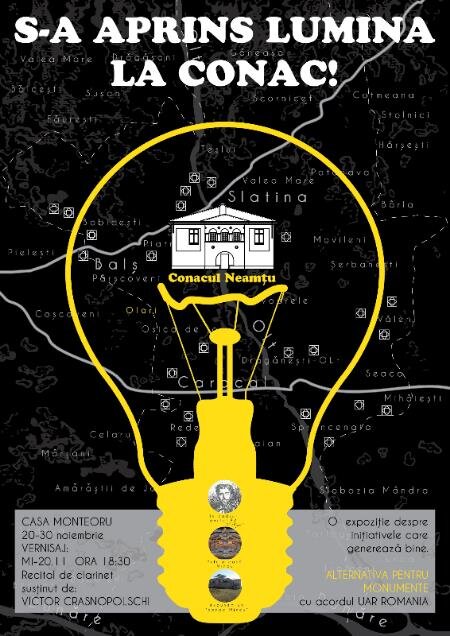
Scara măgarilor
Donkey’s Scale*
| Big, bigger, the biggest |
| În primele decenii postbelice, încă mai umbla o vorbă în Occident: Bigger is Better. Afirmația avea, pasămite, o mulțime de conotații, de la cea sexuală până la cultul creșterii infinite ca mijloc de progres al lumii. Ideea venea, bineînțeles, din America începutului de secol, când Daniel Burnham exprimase o opinie generală inspirată de Machiavelli: Make no little plans; they have no magic to stir men’s blood. S-au găsit și în Europa câțiva fani ai acestui optimism grandilocvent. Apetitul estetic corbusianist pentru gesturile mari s-a tras pesemne de la acest spirit de juvenilă virilitate - via Uniunea Sovietică. Și tot astfel îmi explic și entuziasmul anilor ‘60 pentru Les Grands Projets. Nu cred că era vorba doar de dorința arzătoare de a rezolva criza postbelică de locuințe, ci în egală măsură de acel elan remanent din vremea dezvoltării intensive, industriale, economice și urbane. În aceeași vreme, expresionismul dădea și el, în numele voinței de artă, mari monumente de design arhitecture precum Opera din Sydney. Iar când structuralismul olandez a făcut acel splendid efort de dragul micilor identități, a fost criticat că a compromis marea identitate.
În 1973, în contrapondere, s-a răspândit o carte a unui economist germano-britanic, cu un titlu percutant: Small is Beautiful. E.F. Schumacher îl chema pe autor și el propunea înlocuirea gândirii universaliste și a pornirilor la scară mare, cu măsuri mici, adecvate diferențiat, la scară locală, controlate descentralizat, explicând că acestea sunt eficiente într-o politică cu adevărat democratică, centrată pe oameni. De altfel, subtitlul cărții era A Study of Economics as if People Mattered. Pledoaria lui a avut o audiență remarcabilă în acel an al marii crize energetice și a avut apoi o recrudescență odată cu dezbaterile despre globalizare și sustenabilitate. Se mai întâmplă, iată, ca o critică așezată să tempereze și să reorienteze energiile, atunci când Big devine too Big, și Bigger is Better degenerează în too Big is Bad.
|
| Citiți textul integral în numărul 6/2013 al revistei Arhitectura |
| Big, Bigger, the Biggest |
| During the first post-war decades, there was a very popular saying in the West: Bigger is Better. It had a multitude of connotations, ranging from the sexual one to the cult of infinite growth as a means of prosperity for humankind. The idea obviously originated in the America from the beginning of the century, when Daniel Burnham had voiced a general opinion inspired by Machiavelli: Make no little plans; they have no magic to stir men’s blood. Some fans of this inflated optimism could be found in Europe as well. Corbusier’s aesthetic eagerness for grand gestures was apparently due to this spirit of juvenile virility, via the Soviet Union. And this is how I also think the enthusiasm of the ‘60s for Les Grands Projets can be accounted for. I don’t think it was merely a burning desire to resolve the post-war housing crisis, I think it was also about that energy left over from the time of intensive industrial, economic and urban development. At the same time, expressionism was also producing, in the name of the will for art, great monuments of architectural design such as the Sydney Opera House. And when Dutch structuralism made that splendid effort for the sake of small identities, it was criticized for compromising the great identity.
In 1973, as a counterpoint, a book written by a German-British economist began to gain popularity. It had a poignant title: Small is Beautiful. The author’s name was E.F. Schumacher and he proposed that Universalist thinking and large-scale planning be replaced with small measures, differently adjusted to the local scale and controlled in decentralized fashion, explaining that these are actually efficient in the framework of a truly democratic and people-oriented politics. In fact, the subtitle of his book was A Study of Economics as if People Mattered. His plea had a remarkably wide appeal in that year of the great energy crisis and saw an outbreak afterwards, with the emergence of the debates on globalization and sustainability. It happens, therefore, that poised criticism occasionally tempers and re-directs the energies, when Big becomes too Big, and Bigger is Better degenerates in too Big is Bad. |
| Read the full text in the print magazine. |
| * Donkey’s scale is a phrase usually employed to refer to an arrangement of things according to their height, from the lowest to the tallest. (translator’s note) |













